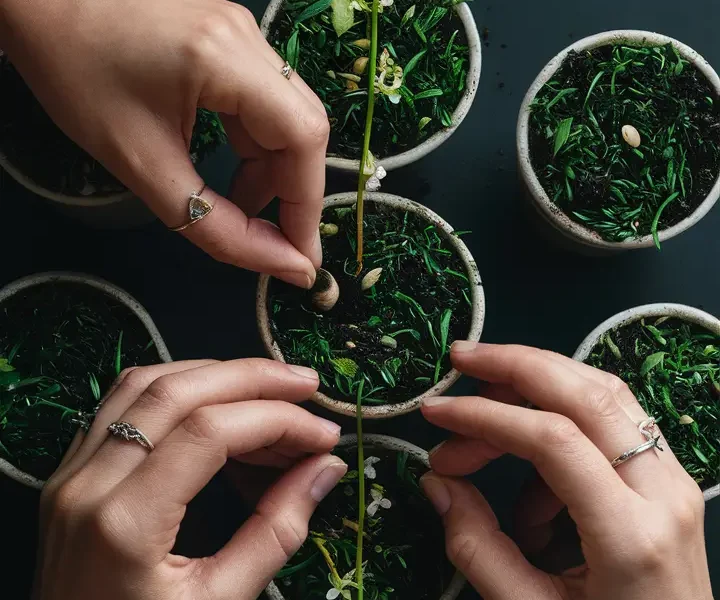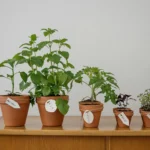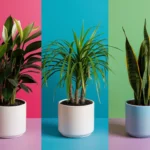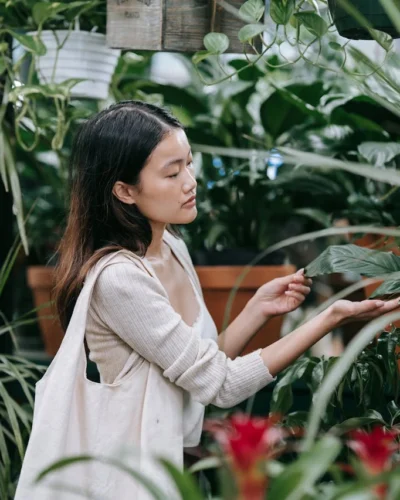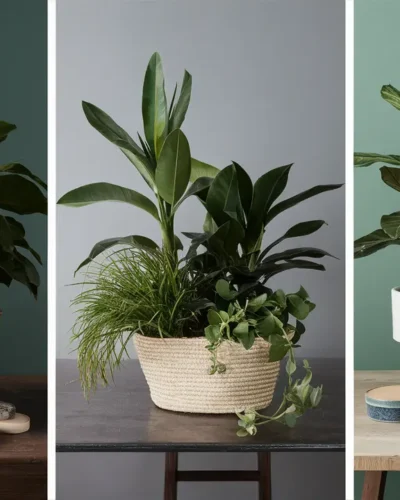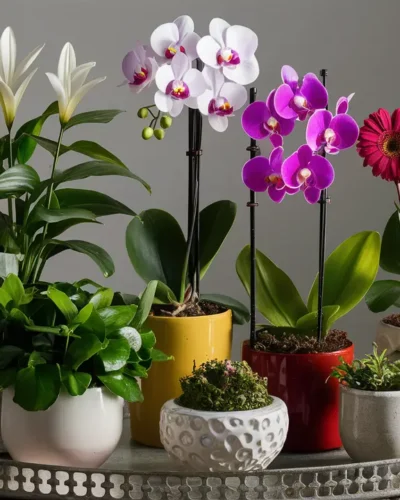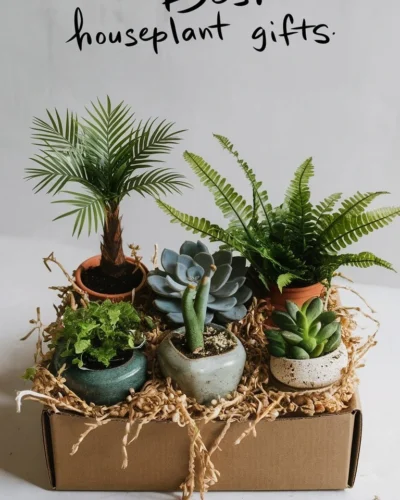Have you ever taken a moment to hold a small seed in your hand and appreciate the boundless possibilities it contains? This article will unveil the magic of growing houseplants from seed. We’ll explore the fascinating world within a seed, delve into the simple steps required to witness its transformation, and discover the numerous benefits of nurturing your own little green miracle.
The Seed: A Wonder of Nature
Imagine a tiny package containing all the instructions needed to create a complex living organism. That’s exactly what a seed is! Each seed is a marvel of nature, meticulously designed for survival and propagation. Here’s a closer look at the key components within a seed:
- Seed Coat: This tough outer shell protects the delicate embryo inside and helps the seed survive harsh conditions like extreme temperatures and drought.
- Embryo: This is the heart of the seed, containing the blueprint for the future plant. It consists of the tiny root, stem, and leaves waiting to unfurl.
- Endosperm: This starchy or oily food source provides the nourishment the embryo needs to germinate and grow until it establishes its own root system.
The specific parts and their sizes will vary depending on the plant species. However, the basic principle remains the same – seeds are self-contained packages waiting for the right conditions to awaken to life.
Witnessing the Miracle: From Seed to Sprout
The journey from a tiny seed to a thriving houseplant is nothing short of magical. It requires a little patience and some basic knowledge, but the rewards are well worth the wait. Here’s a breakdown of the simple steps involved in germinating seeds and nurturing them into healthy seedlings:
1. Selecting Your Seeds and Supplies:
- Choosing the right seeds: Not all houseplants are created equal when it comes to seed propagation. Some, like herbs and fast-growing flowers (check out our article on the most rewarding houseplants to grow from seed), are easier to grow from seed indoors than others. Opt for fresh, high-quality seeds from a reputable source.
- Preparing your pots: Small pots with drainage holes are ideal for starting seeds. Recycled yogurt containers or plastic cups with drainage holes punched at the bottom work well too! You can find tips on creating a self-watering planter in our ultimate guide here.
- Choosing the right soil: Seedlings need a well-draining, lightweight potting mix. Opt for a seed-starting mix or a mixture of regular potting soil and perlite (check out our guide on essential growth factors for tips on boosting your indoor garden).
2. Planting and Watering:
- Moisten your potting mix: Fill your pots with the prepared soil mix and dampen it thoroughly.
- Sowing the seeds: Planting depth varies depending on the seed size. Generally, a good rule of thumb is to sow seeds at a depth two to three times their own width. For tiny seeds, simply sprinkle them on the soil surface and gently press them in.
- Maintaining moisture: After planting, cover the pots with clear plastic wrap or a humidity dome to trap moisture and create a mini greenhouse effect. Keep the soil consistently moist, but not soggy.
3. Light and Warmth:
- Finding the right spot: Place your seed trays in a warm location (around 70°F) with indirect sunlight. Avoid direct sunlight, as it can dry out the soil too quickly.
- Providing gentle warmth: A heat mat can be helpful for some seeds that require warmer temperatures for germination.
4. Patience is Key:
- Sprouting time: The time it takes for seeds to germinate varies depending on the species. Some seeds may sprout within a few days, while others may take weeks. Be patient and maintain consistent moisture and warmth.
- Once they sprout: Once you see tiny green shoots emerge, gradually remove the plastic wrap or humidity dome to allow for proper air circulation.
5. Nurturing Your Seedlings:
- Thinning seedlings (optional): If you’ve sown multiple seeds per pot and they all sprout, you may need to thin them out to allow for proper growth.
- Providing light: As your seedlings grow, gradually introduce them to brighter indirect sunlight.
- Watering and feeding: Water your seedlings regularly as the top layer of soil dries out. Once they have a few sets of true leaves, you can start feeding them with a diluted liquid fertilizer (check out our guide on thriving indoors).
By following these simple steps, you’ll be well on your way to witnessing the miracle of germination and nurturing your very own houseplants from seed. In the next section, we’ll explore the many benefits of embarking on this rewarding journey.
Beyond the Sprout: The Many Benefits of Growing from Seed
Growing houseplants from seed offers a multitude of benefits that extend far beyond simply having a new plant. Here are some reasons why you should consider taking the plunge into seed-starting:
- A Deeply Rewarding Experience: Witnessing the entire life cycle of a plant, from a tiny seed to a thriving houseplant, is an incredibly rewarding experience. It fosters a sense of accomplishment and a deeper connection to the natural world.
- A Budget-Friendly Option: Seeds are generally much more affordable than mature houseplants, especially for rarer varieties. This allows you to experiment with a wider variety of plants without breaking the bank (check out our articles on gorgeous gardens on a shoestring and frugal foliage for affordable backyard beauty).
- Greater Plant Selection: While nurseries and garden centers offer a curated selection, seeds open doors to a wider variety of houseplants, including unique heirloom varieties or those that might be harder to find locally.
- Stronger, Healthier Plants: Studies have shown that plants grown from seed can be more resilient and less prone to pests and diseases compared to commercially grown plants.
- A Sustainable Choice: Growing from seed reduces your carbon footprint associated with transporting mature plants from greenhouses. Additionally, you have more control over the quality of soil and avoid potential pesticide residues that might be present in commercially grown plants.
- A Fun and Educational Activity: Seed starting is a fantastic activity to share with children, fostering a love for nature and teaching them about plant life cycles (check out our articles on awesome houseplants for kids and super easy plants for curious little hands).
Now that you’re armed with the knowledge of seed selection, germination techniques, and the numerous benefits of growing from seed, it’s time to get your hands dirty and embark on this exciting journey! In the next section, we’ll provide some suggestions for easy-to-grow houseplants that are perfect for starting your seed-starting adventure.
Easy Seedlings for Success: Your Houseplant Starting Point
The world of seed-starting can be overwhelming, but fear not! Here are a few easy-to-grow houseplant options that are perfect for beginners:
- Herbs: Fresh herbs add a touch of life and flavor to your kitchen windowsill. Basil, chives, parsley, and cilantro (check out our ultimate guide to vertical herb gardening for fresh flavor at your fingertips) are all fast-growing and relatively forgiving. They thrive in bright indirect sunlight and well-draining soil.
- Sunflowers: These cheerful giants bring a burst of sunshine indoors, even in winter. Opt for dwarf varieties suitable for container growing. Sunflowers are light-lovers, so place them in a sunny window and keep the soil evenly moist.
- African Violets: These popular flowering houseplants come in a delightful array of colors and are known for their beautiful, velvety leaves. While they require slightly more humidity than other options, our guide on creating a beautiful indoor jungle with self-watering planters offers tips on maintaining consistent moisture levels.
- Cat-Grass (Wheatgrass): If you have a feline friend, consider growing cat grass from seed. It provides a healthy alternative to your houseplants (check out our guide on how to stop your cat from digging houseplants) and helps satisfy their natural instinct to graze.
- Air Plants (Tillandsia): These unique, low-maintenance plants don’t require soil at all! They absorb moisture and nutrients from the air. Consider mounting them on driftwood or decorative pieces for a beautiful and conversation-starting display (check out our guide on 20 gardening hacks for happy and thriving plants).
These are just a few ideas to get you started. With a little research and the information provided in this article, you’re well on your way to unlocking the magic of growing houseplants from seed and transforming your living space into a thriving urban jungle.
Remember, the key to success is choosing the right seeds for your skill level and light conditions in your home (check out our guide on sunshine solutions: choosing the best blinds for thriving houseplants). For more in-depth information on specific plant care, don’t hesitate to research the individual needs of each variety you choose to grow.
Conclusion: Cultivating Joy, One Seed at a Time
Growing houseplants from seed is an enriching and rewarding experience. It allows you to witness the miracle of life unfold before your eyes, nurture a tiny miracle into a thriving plant, and create a personalized haven filled with vibrant greenery.
This journey is not just about the destination – the lush houseplants that will grace your shelves. It’s about the process itself – the thrill of germination, the satisfaction of overcoming challenges, and the joy of connecting with nature in a profound way.
So, the next time you hold a tiny seed in your palm, remember the potential it holds. Take a leap of faith, embrace the learning curve (check out our houseplant parenthood guide for beginners), and embark on this exciting adventure. You might just discover a newfound passion for plant parenthood and transform your living space into a sanctuary filled with life and beauty.
Here are some additional resources to help you on your seed-starting journey:
- Sprouting Joy: The Easy Guide to Starting Houseplants from Seeds: This comprehensive guide dives deeper into the process of seed selection, planting techniques, and seedling care
- 20 Gardening Hacks for Happy and Thriving Plants: This article offers practical tips and tricks to ensure your seedlings flourish
- The Ultimate Guide to Self-Watering Planters: Self-watering planters can be a helpful tool for busy plant parents or those prone to overwatering. This guide explores the benefits, different options, and how to use them effectively
With a little planning, patience, and the information provided here, you’re well on your way to cultivating joy, one seed at a time. So, unleash your inner plant parent and get ready to witness the magic of life unfold!
Happy planting!
FAQ: Growing Houseplants from Seed
Here are some frequently asked questions (FAQs) about growing houseplants from seed:
Q: What are some easy houseplants to grow from seed?
A: Several houseplants are easy to grow from seed
- herbs (basil, chives, parsley, cilantro)
- sunflowers (dwarf varieties)
- African violets
- cat grass (wheatgrass)
- air plants (Tillandsia).
Q: What supplies do I need to get started?
A: You’ll need high-quality seeds from a reputable source, small pots with drainage holes, well-draining potting mix (seed-starting mix or a mixture of regular potting soil and perlite), clear plastic wrap or a humidity dome, and a watering can.
Q: How long does it take for seeds to germinate?
A: Germination time varies depending on the plant species. Some seeds may sprout within days, while others may take weeks. Be patient and maintain consistent moisture and warmth.
Q: How much light do seedlings need?
A: Seedlings generally need bright indirect sunlight. Avoid direct sunlight, as it can dry out the soil too quickly.
Q: Do I need to fertilize my seedlings?
A: Once your seedlings have a few sets of true leaves, you can start feeding them with a diluted liquid fertilizer.
Q: What are the benefits of growing houseplants from seed?
A: There are many benefits to growing houseplants from seed, including the satisfaction of nurturing life from a tiny seed, a wider variety of plant choices, potentially stronger and healthier plants, a more sustainable choice, and a fun and educational activity (especially for children).
Q: Where can I find more information on specific plant care?
A: Once you’ve chosen the seeds you want to grow, research the individual needs of each variety to ensure you provide them with the optimal growing conditions.
Q: What if my seeds don’t germinate?
A: Unfortunately, seeds don’t always germinate. There could be several reasons for this, such as old or poor-quality seeds, incorrect planting depth, inconsistent moisture or temperature, or lack of light. Don’t be discouraged! Try again with fresh seeds and ensure you’re following the recommended germination requirements for your chosen plant.
Q: How do I thin out seedlings if I planted multiple seeds per pot?
A: If you sowed multiple seeds per pot and they all sprout, thinning is necessary to allow for proper growth. Wait until the seedlings have developed their first set of true leaves. Gently remove the weaker or less desirable seedlings with tweezers or scissors.
Q: What are some tips for preventing pests and diseases on my seedlings?
A: Proper watering techniques (avoiding overwatering) and good air circulation are key to preventing fungal diseases. Using a sterile seed-starting mix can also help. For more specific advice on pest and disease prevention, research the individual needs of the plants you’re growing.
Q: Can I grow any houseplant from seed?
A: Not all houseplants are suitable for seed propagation. Some plants may take a very long time to mature from seed, or they might not grow true to type (meaning the resulting plant might not have the same characteristics as the parent plant). It’s always best to research the specific propagation methods recommended for the houseplant variety you’re interested in growing.
Q: Where can I find more resources on growing houseplants from seed?
A: In addition to the articles linked throughout this guide, there are many resources available online and in libraries. Consider searching for seed-starting guides for beginners or information on specific plant varieties you’d like to grow.

